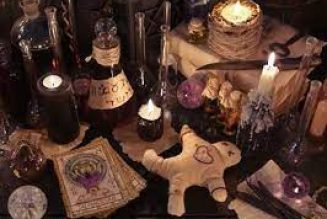To the ancient Celts, Samhain marked the most important of four Celtic fire festivals. Located halfway between an equinox and a solstice, it is one of four cross-quarter festivals. Every year on the first frost after the full moon in October, families allowed their hearth fires to burn out. At this time, they brought back herd animals from grazing and completed gathering the harvest.
After the fires died, they gathered with the rest of their tribe to observe the Druid priests relighting the community sacred fire using friction. The priests induced friction with a wheel and spindle: the wheel, representing the sun,turned from east to west and lit sparks. At this time, they made prayers and offerings or sacrifices related to their needs. The Crom-cruach came out: this was an emblem of the sun, and scholars are uncertain whether it represented a Pagan god or symbolized an aspect of nature embodied in a stone pillar.
The villagers left offerings of food at the edge of their village for wandering spirits and faerie folk. There was also a sacrifice of a black sheep, a black sow,or cattle. At the end, every person returned home with a brand lit from the sacred fire, which they used to relight their own hearth and then to light bonfires or to set torches at the edge of their fields. These ancients considered it a sin to relight the hearth fire any other way.
To the ancient Celts, Samhain marked the completion of the harvest and called them to put their energy into preparing for the coming winter. It also betokened a day when their ancestors would come to visit, followed across the veil by all sorts of creatures both good and bad that moved freely in the mortal world on Samhain night. Since faeries were often unfriendly, the Celts dressed themselves as animals or as other fearsome creatures as a way to prevent kidnapping by faeries and later by witches.
